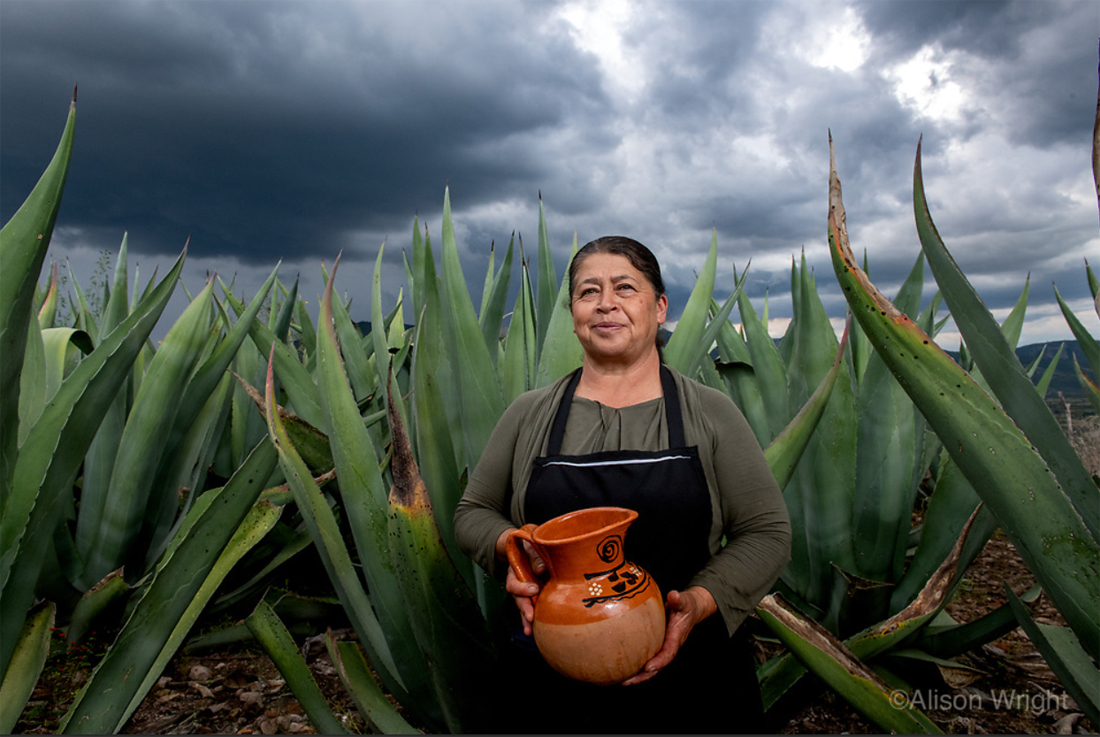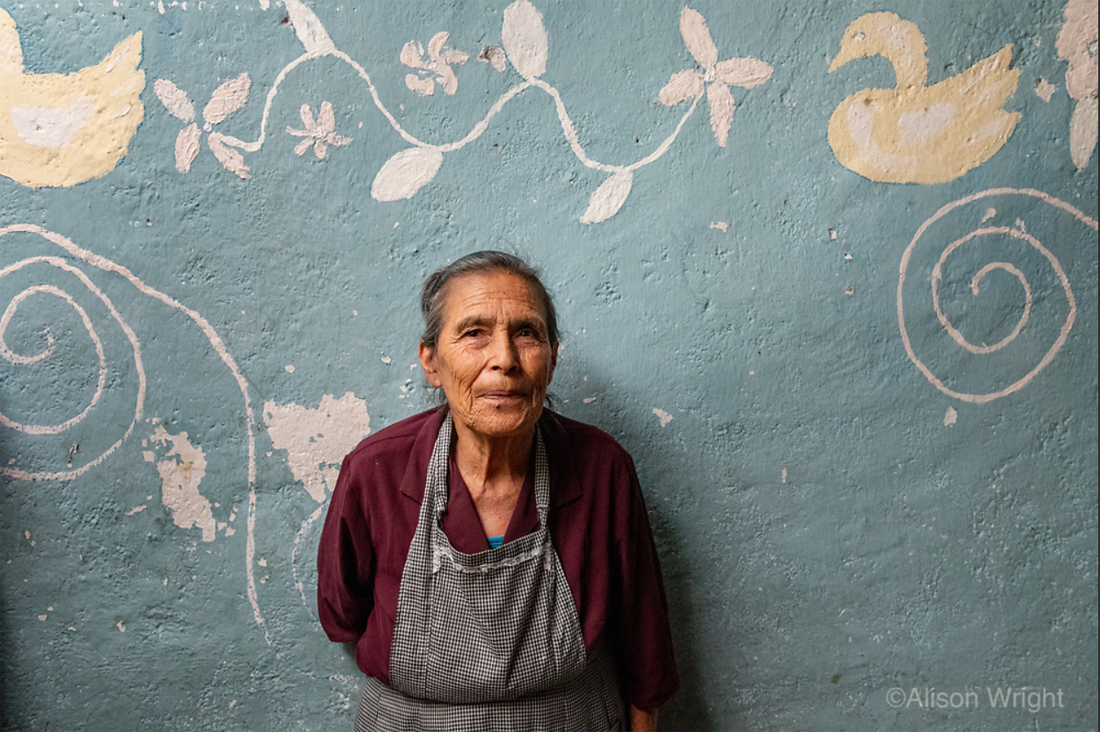
Doña Beatrice, Lagunillas
*
Jan, 8, 2022
by Dr. David Fialk, Chief Cook / Bottle-washer
Sometimes less is more. Sometimes just a few words say it all. In physics sometimes just a few letters say it all. An elegant equation is more likely to be true; take E=MC2, for example. In religion, too, brevity can be a plus. We see this in the Hindu concept of the mantra, a short phrase, word or sound, the repetition of which enlightens.
Mexican culture has its own version of this phenomenon. Neither science nor religion, Mexico's mantra is the common expression, "Si, pero no" ("Yes, but no").
At first, and for years, Si, pero no struck me as a contradiction. How could something be both yes and no? It was a conundrum, a question without answer. It was a Zen koan: "What is the sound of one hand clapping?" or "What was your face before you were born?" But as in contemplating a Zen koan, over the years my meditation on this popular saying has enlightened me regarding my adopted land.
Modern Mexico makes more sense when you keep in mind the hacienda system that ruled the land for centuries. The hacienda owner was God, or at least ruled in God's place here on Earth. He was the law. Everything and everyone, as far as the eye could see and beyond, was his. It required several days' ride on horseback to cross a hacienda. And where one hacienda ended, another hacienda began.
The owner and his family were master and everyone else were slaves, without rights or protection. The owner could do with them as he wished. He exercised droit du seigneur ("right of the lord"), having sex with whatever subordinate woman on her wedding night; no doubt dampening festivities.
Lagunillas, the town up the mountain across from Zandunga on the way to Jalpa where Doña Beatrice has her picturesque restaurant, was founded by one of those hacienda slaves. Pushed too far, this man killed his master and escaped, finding refuge beside the spring on that mountainside.

El esposo, Lagunillas
*
Slaves cannot say "no". They can only express "no" passive aggressively, by doing things slowly and poorly. Sound familiar?
This explains the otherwise unfathomable dysfunction of Mexican bureaucracy. Making you wait or come back again demonstrates passive-aggressive power: "But, last time, when you told me to come back with these two documents, why didn't you also tell me to bring the third, the one you are asking for now?"
Fernando, a good friend of my daughter, whose mother was Mexican and whose father was American, a gay guy, organized events here in San Miguel. I heard him recount, in a very exasperated, very gay way, how at one point he snapped, it all becoming too much for him. Fernando had had a series of meetings with the owner of a venue about his hosting an event there. Finally, with all the details ironed out, the two of them having come to terms, the venue owner said, "Come back next Tuesday and we'll sign the agreement." Fernando lost it then and there, exclaiming, "No! We'll sign the agreement now!" And they did.
Sometimes, when a Mexican asks me ¿Cómo estás?, I will respond, "Estoy más mexicano?" ("I'm more Mexican.") Recently this self-evaluation was further corroborated. I found myself mystically aligning with the power of Si, pero no, actually living it out.
It started when I met an attractive young architect at a small event outside of town. Showing her my web platform on my phone, I offered her publicity on Lokkal's Wall. Then came the holidays. But a few days ago, just after the New Years, she took me up on my offer, sending me photos of her work. When I asked her for payment, she asked me, very correctly, if I hadn't told her that the promotion would be free. All this was happening in messages in Spanish over Whatsapp. Before sending my next message, explaining that now that I have a sales-person I can no longer give advertising away, I read it over. In doing so I was shocked to realize that my response to her began "Si, pero no." We wound up coming to terms.

La madre, Lagunillas
*
Iain McGilchrist refers to a Talmudic tale to describe the functioning of the inclusive, right hemisphere of the brain. The Talmud describes a case on which one rabbi ruled "Yes" and a second rabbi ruled "No." The Talmud then introduces a third rabbi who, having reviewed the situation, decreed that both the first and the second rabbis are correct. The tale finishes by telling of a fourth rabbi, who, studying everything up to this point, objected to God, that the first and the second rabbis could not both be correct. God responded, "You, too, are correct."
McGilchrest tells us that our ideal brain state is neither "either/or" nor "both/and" but both "either/or" and "both/and". He reminds us that the whole (the right brain perspective) includes the partial (the left-brain perspective), but that the partial cannot encompass the whole. Yes says "yes" even to no, but no only says "no."
After 65 years of struggle, recently I'm making great progress learning to live with my own contradictions. I'm understanding that my weakness does not negate my strength any more than my strength vanquishes my weakness. It's a bit maddening, but at any moment I can be both full and empty; at once happy and sad; clear and confused at the same time. I'm not expecting a final accounting anymore. Neither the triumph of victory nor the agony of defeat seems at all likely. Mexico and my 65 years have taught me that, often, in the most important matters, the best that we can hope for is Si, pero no.
**************

Dr. David presents Lokkal, the social network, the prettiest, most-efficient way to see San Miguel online. Our Wall shows it all. Join and add your point of view.
**************
*****
Discover Lokkal:
Watch the two-minute video below.
Then, just below that, scroll down SMA's Community Wall.
Intro / Mission

Visit SMA's Social Network
